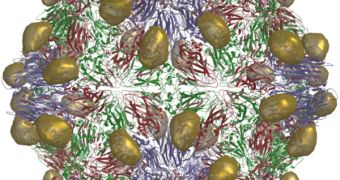Silicon-based computing technology seems to have reached the maximum limit of miniaturization and everyone is waiting for its successor. Now, a team of researchers claims to be able to revive the veteran of computer chips and even improve its capabilities, using a new hybrid technology.
The new memory device made by US and Italian researchers is made of a hybrid material, containing quantum dots as semiconductors. This will not be great news, since scientists have been experimenting with quantum dots in the last decade.
A quantum dot is a semiconductor nanostructure that confines the motion of conduction band electrons, valence band holes, or excitons (bound pairs of conduction band electrons and valence band holes) in all three spatial directions and has a discrete quantized energy spectrum.
There is one thing that no one was able to do before: combining quantum dots with individual viruses. The new hybrids could have many applications, like high-density memory chips and biocompatible electronics.
Mihri Ozkan of the University of California at Riverside and colleagues exploited the property of some biological materials of reacting to inorganic molecules to build a device that can store digital information.
"Interactions between organic and inorganic particles are quite fascinating," team leader Ozkan said. "In our case, finding the memory effect was quite unexpected because each nanoparticle does not have any memory characteristics on its own, but only when connected as a hybrid."
The manufacturing process consists in depositing cosahedral cowpea mosaic viruses (CPMV) on cadmium selenide and zinc sulphide quantum dots, by binding them on the capsid of the virus, the outer shell.
The virus itself is harmless to humans, so the new hybrid devices won't pose any threat. The viruses were embedded into a polymer matrix, sandwiched between two conducting electrodes that can operate as a memory device with conductive properties states that can be switched between high and low, corresponding to a 1 and a 0, by applying a low voltage.
In addition to memory devices, these hybrids could also be used in some really futuristic applications, like in nanobots that can be implanted in the human body and send back information on medical conditions.
"In Star Trek terms, the hybrids could act like nanomachines or nanorobots built for treating disease," quips Ozkan.

 14 DAY TRIAL //
14 DAY TRIAL //